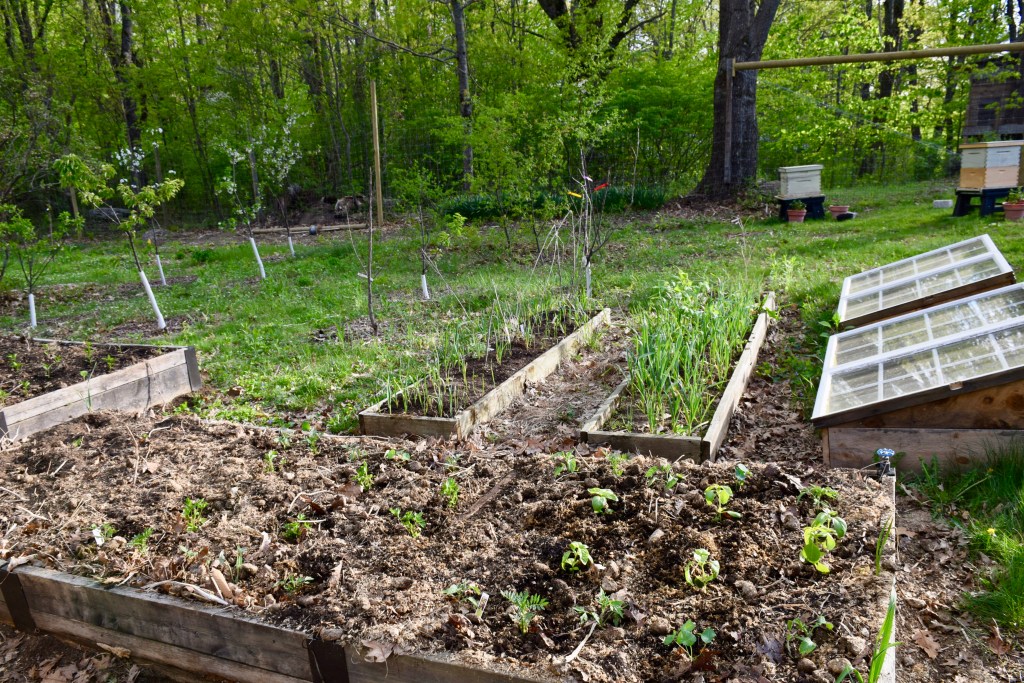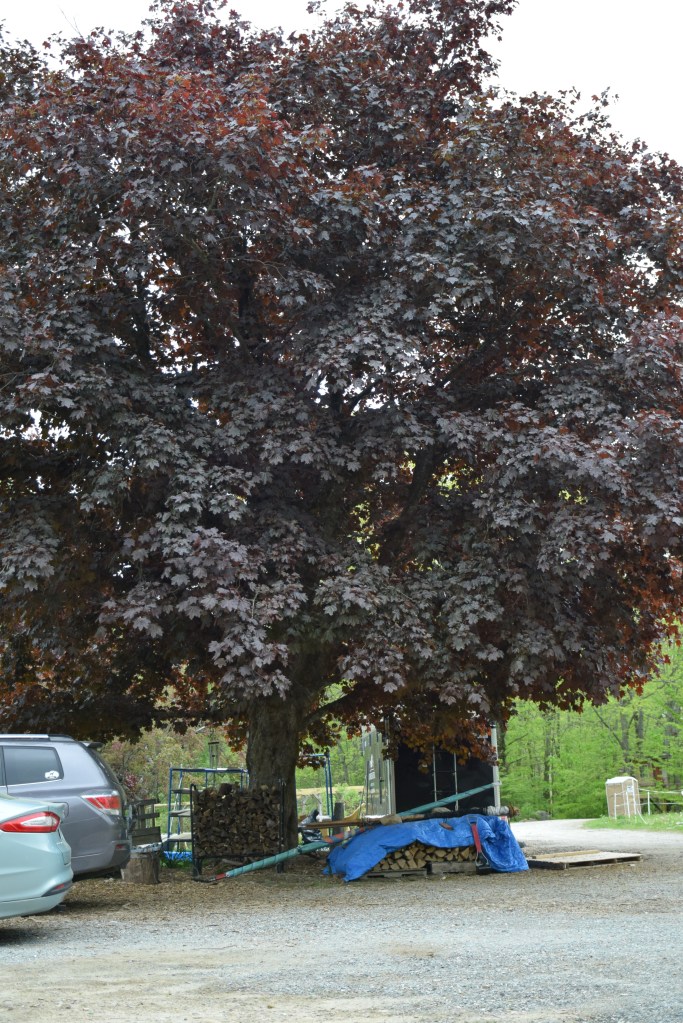
I’m living on a permaculture farm in the Southwest corner of New Hampshire. What little I know of agriculture is founded in growing up in rural America, the child of upwardly mobile middle-class parents in the last century. My first home was an old farm at the end if a dirt road. It held all the wonders of childhood in its stone walls, stream full of tangy watercress, and meadows. From there we moved to a new “development” in what was once an apple orchard. We acquired sheep and horses that were stabled at a nearby farm keeping me close to the earth. Now that I am retired, it is time to stop and focus my attention on things around me that I have always taken for granted.
Our vocabulary has readily embraced the names we assign to modern agriculture; organic, biodynamic, permaculture, and more under the heading of sustainable farming. We put a new emphasis on “local” food and products, bowing to the need to also sustain our communities. My introduction to biodynamic farming began a few years ago when I took care of an elderly German gentleman who brought the practice to America. His farm was a wonder of fresh food and glorious life. The next step in my education was landing here at WildSide Farm.
The name may be a reference to the Lou Reed song – Walk on the Wild Side. On the other hand, it may be that the owners just felt this was a fitting tribute to living in harmony with what grows naturally and wild here.

The orchard boasts raised beds, cold frames fashioned from discarded windows, a Hugelkultur bed, two beehives, and a chicken coop. It is a world of scents, colors, and life buzzing loudly. I make nightly trips across the driveway to snip fresh herbs for my dinner and to take in the wonder of what blossomed or grew during the day.

The flower featured at the top of this post is a Jack in the Pulpit. Though it is native to New England, I don’t remember seeing these since childhood. The comical green and purple “pulpit” caught my eye as things were beginning to green-up, and I’ve been delighted in it ever since. Wikipedia tells me: If the plant is cooked, it can be eaten as a root vegetable. The calcium oxalate crystals produce a peppery flavor.[4] If the plant is sliced then dried, it can be eaten like potato chips or ground into a flour [5]

Otherwise, it is entirely toxic. So who was the brave soul who decided cooking it would make everything OK?


To the left of my driveway, the tri-colored Beech is just beginning to leaf out. Such a glorious specimen! When the sun shines through its multicolored leaves, I can’t help but feel the sap rising in its trunk and life surging. I looked it up as it is not a common, native tree. If the Oak is the King of Trees, the Beech is the Queen. She is considered a Forest Tree, meaning she will not tolerate toxins such as salt or other byproducts of urban life. A quick check of Treesymbolism.com revealed these interesting notes:
* The Beech tree is associated with knowledge.
* It is a sign of longevity, on average they live 300 years.
* It is considered a safe tree for visitors that take abode under it as it believed to prevent harm from people.
So, a tree that cannot exist with our toxic lifestyle yet will protect us from ourselves?

In front of my cottage stands a mighty Black Walnut. It has barely begun to leaf out but if last year’s discarded fruit is any indication, this behemoth is a prodigious producer. I’ve been warned that when the nuts fall in Autumn, they have been known to break windows and destroy fragile objects below. Additionally, the Black Walnut is very protective of its environment, causing many species of plants to shrivel and die in its presence. Thankfully, the study of permaculture is shedding light on practices of planting species that not only co-exist but aid in pollination and attracting beneficial insects. An additional feature I’ve noticed is last year’s walnuts keep the squirrels very happy so they leave my bird feeders alone!

In front of the main house is the largest and healthiest Red Maple I’ve ever seen.

The trees attract an abundance of birds. In addition to the usual suspects, we have Northern Orioles, at least four species of woodpeckers, Blue Grosbeaks, Pine Warblers, and just recently a flood of humming birds. I’m learning their names not just visually, but also recognizing them by their songs and calls. So joyful! Nature doesn’t know there’s a pandemic.

At this time of quarantine and isolation, taking a walk on the wild side is good for the soul.




I know a dirt road and house at the end and that song.
great to end up back where you belong ( still working on that)
“So, a tree that cannot exist with our toxic lifestyle yet will protect us from ourselves?” A great and perfect line.
LikeLiked by 1 person
I had no idea Jack-in-the-Pulpit could be eaten! I’ve also never seen a tri-colored beech. She sure is beautiful. We had a stately black walnut tree in our yard in Nashua and the autumn nuts can definitely do some damage. You don’t want to be walking under it when one fall to the ground! Your WildSide walks look so calming and happy.
LikeLiked by 1 person